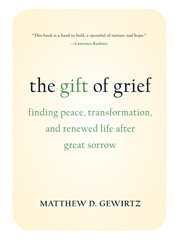An essay bearing a subtitle that reads “A Childhood Obsession with the Holocaust” doesn’t exactly promise loads of laughs. But laugh I did, at given moments, as I read this piece by Rachel Shukert on Nextbook today.
Here’s an excerpt:
“We need to talk,” said my mother. The ballet car pool had just dropped me at home.
I wriggled impatiently, anxious to fix some microwave popcorn and return to my copy of Nuremberg Diary. “Um, not now, okay?”
“I got a call today from Mrs. Finkel.”
“Mrs. Finkel?”
“The librarian. You know, at the Jewish Community Center. She’s friends with Grandma—”
“I know who she is. How did she get this number?” I demanded.
“What do you mean, how did she get this number? Probably she got it out of the Hadassah directory, the same way I would get her number.”
Nearly every Jewish woman and girl in the country belongs to Hadassah, the Women’s Zionist Organization of America. The local chapter directory is a veritable who’s who of area Jewish females. Earlier that week, I had casually mentioned to my mother that we might consider terminating our association with the organization and withdrawing our names from its records, as when They came for us, the Hadassah directory would likely be the first place They’d look.
“Mrs. Finkel told me that you tried to check out all four tapes of Shoah this afternoon.”
“So? You’re allowed to check out all four tapes! They come as a set! It’s like checking out one tape!”
She was still making that damn face. I hated that face. “She told me it was the seventh time you’ve tried to check it out in the past three weeks.”
“So what? She kept saying it was reserved.”
“It’s on the thirteen-and-over list, honey.”
“Meaning?”
“Meaning you have to be thirteen or over to check it out. That’s the rule.”
“That’s the first I’ve heard of any such rule.”
“Sweetie, that’s the rule.”
“IT’S A BULLSHIT RULE!”
My mother’s shrill temper flared at last. “And when were you planning to watch all NINE AND A HALF HOURS OF SHOAH, HUH? Were you going to take a night off from whatever weird fucking shit you’re doing to the walls of your room when the normal people are asleep?”
Never content to let a long period of insomnia pass unproductively, I had kept myself busy in the restless wee hours cutting out pictures of famous Jews from magazines and sticking them on the walls of my bedroom with bits of chewed gum, where they acted as talismans warding off the unspeakable evil that lay in wait. The resemblance to Anne Frank’s famous bedroom wall in the Secret Annex, touchingly adorned with colorful postcards and newspaper ads picturing film stars and babies, was not lost on me; however, I reasoned, if poor Anne had only been a bit more judicious, a little more ethnocentric in her selections, things might have turned out differently. The Gestapo wasn’t going to get me, not with that giant picture of Henry Kissinger on the wall.
I have to confess that there are aspects of this essay that really resonate for me. To some extent, the Holocaust “obsessed” me, a grandchild of refugees from Nazi Germany, during childhood, too. And it took me years (and, frankly, some therapy) to work through this obsession. I’m also convinced that writing fiction that might be labeled “post-Holocaust” fiction helped as well.
In any case, now that I’ve read Shukert’s essay, I’m looking forward to her book. Should be a good companion to this one on my bookshelf.



